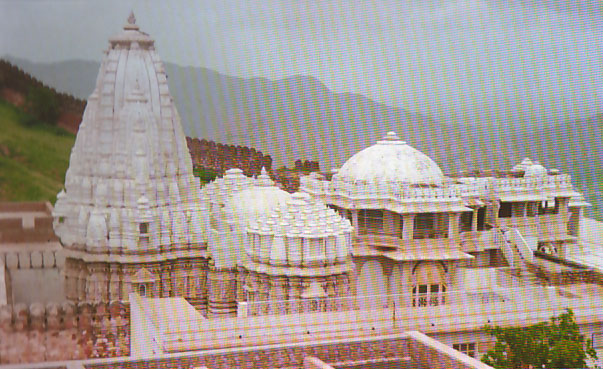Jalore & Swarngiri Durg Ka Sansakritik Itihas
 |
(Culture History of Swarngiri Fort and Jalore in Rajasthan)
Authord By Dr. Sohan Lal Patni
Book Review by Mr. P. L. Jain
Publisher : Shri Swarngiri Jain Teerth Pedhi, Kanchangiri Vihar, Jalore.
Distributor : Ajit Foundation, Shanti Nagar, Sirohi, Rajasthan
Publication Period : May, 2002.
Price : Rs. 200/-
The writer, Dr. Sohan Lal Patni has carried intensive studies of the Swarangiri fort and Jain temples located inside the fort premises and outside in Jalore town and around, situated in the southern part of Rajasthan, tracing back its historic back ground in an authoritarian manner. The book is directly based on his historic and archaeological studies and constitutes an important addition to the books on ancient and medieval history of Jalore region, its continuous ups and downs, political upheavals, destruction and renovation of Jain monuments and temples and spread of Jain religion. While going through the book, the reader can observe that the entire region of Jalore covering places like Bhinmal, Sanchore etc. finds repeated mention in Jain literature for its cultural and religious heritage, vihar of eminent saints, acharyas and even Tirthankar Mahavir swami himself. Just to trace its pre-historic importance, it is mentioned in 'Vividh Teerth Kalpa' a part of Jain epics, that this entire region used to form a part of East Ganadhar region, which had its capital at Taksha shila and was governed by Bahubali, the second son of Bhagwan Rishabh Dev. Since then, it had been a popular vihar kshetra of various saints, acharyas and Tirthankars, including Bhagwan Mahavir himself, who is said to have visited this region seven times, e.g in the 37th, 41st, 44th, 45th and 50th year after his birth. The recent research conducted by Dr. Mohan Lal Bohra of Jalore has revealed that Bhagwan Mahavir had performed the adoration and worship prior to attaining 'kewal gyan' at a place, called Kumharia on the border of Jalore region and Gujarat.
Later, in the sixth century B.C., Jalore district used to be a part of Indus-Souvir kingdom, whose king Udayan was a staunch follower of Jain religion. His wife, Prabhavati had desired to take Jain diksha and become a sadhwi under Bhagwan Mahavir and so Mahavir had travelled all the way from Raj grihi to this place to fulfil her wishes. Detailed descriptions are available about this region being a part of Chandragupta Maurya's vast empire. Then came the rule of Kshatraps, Huns, Gurjar Pratihars, Kushans, Chalukyas and Parmars. Parmars are famous in Jain history of Jalore as they were strict Jains and were very fond of archaeology and had built number of Jain temples in the fort premises and also outside in the entire region. The following period after 1200 A. D. was a dark one for the region since continuous upheavals, change of rulers, repeated attacks to occupy Jalore, alongwith destruction of town and its religious heritage, monuments, statues and temples and exploitation and harassment of people went on till the end of Moghul rule. Records are found of the mis-rule by Iltamish, Kutubuddin Aibak, Alauddin Khilji, Mohamad Tuglak, Mohmas Gazni and then the muslims and Pathans, who ruled from Agra and Delhi through their representatives. Taj Khan's name is famous in history, who was deputed by Akbar and who had totally ruined the one-time prosperous city of Jalore. Inspite of all the mis-rule and destruction, the place was continuously visited by Jain acharyas who took keen interest in its religious growth and development and spreading religious fervour. After the death of Aurangjeb, this region came under the control of Rathods of Jodhpur.
The book, on the whole, is highly revealing, informative and interesting and is well-illustrated by pictures of the fort, temples, architectural beauty, acharyas and some of the rulers. The author deserves rich tributes and full appreciation and congratulations for his stupendous work and his rich contribution to archaeological, historical and Jain literature.
-----------------------------------------------------
Mail to : Ahimsa Foundation
www.jainsamaj.org
R101202